Anytime you can add some color to the garden, it makes things so much better. Many plants have vibrant colors, but nothing hits the spot quite like a pink flowering tree. In fact, there are around ten different varieties that gardeners tend to gravitate to.
Those ten varieties will often produce beautiful pink flowers that are sure to brighten up any garden or landscape. I thought it would be a great idea to list them out for you, talk a little bit about them, and hopefully encourage you to try a few of these out in your own garden.
Let’s hop into it!
Saucer Magnolia

The Saucer Magnolia tree is named for its saucer-shaped flowers that bloom in early spring.
The flowers on the Saucer Magnolia are white with pink or purple. Depending on the variety of trees you purchase, the tones can range from a light pink to a deep purple. There is a Saucer Magnolia tree for everyone!
Saucer Magnolias are wonderful trees for a large front lawn because they grow from 20 to 30 feet high and spread about 25 feet wide. It is the perfect choice if you have space to fill and want something with striking, fragrant leaves.
Eastern Redbud
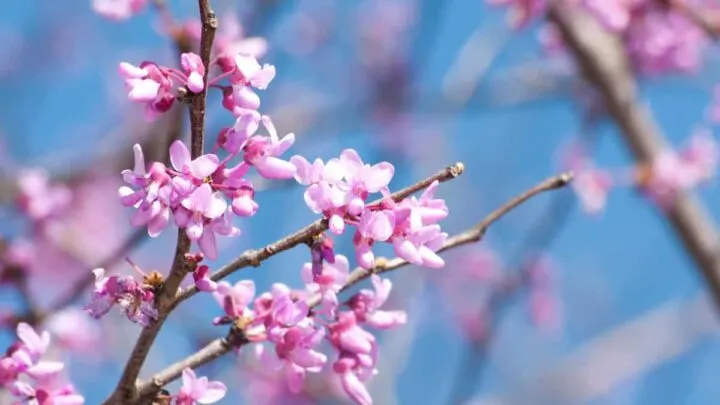
Even though “red” is in the name, the Eastern Redbud is a pink flowering tree, so don’t get confused.
Your Eastern Redbud will bloom like clockwork each year in April, so it will always be something to look forward to.
The “red” in the name comes not from the color of its flowers but from the leaves that start as red-purple colors. They’ll change from green to yellow throughout the year.
The Eastern Redbud is also a good choice if you’re trying to attract butterflies into your yard. The flowers on the Eastern Redbud are so sweet that nectar-loving wildlife will come in flocks to your yard.
Dogwood

You can find Dogwood trees with pink, red, or white flowers, meaning that there is variety and not only pink flowers!
If you decide to plant a Dogwood tree on your property, you do not have to wait long for your tree to mature and have flowers. Most Dogwood trees will flower within two years, but you might be lucky to see your dogwood bloom in one year.
One thing to note is that Dogwood trees have a rather strong odor. Some people say that it smells like fish or – pardon my French – cum. While it may not be extremely noticeable outside, you may want to avoid planting your Dogwood in a high-traffic area.
Orchid Tree
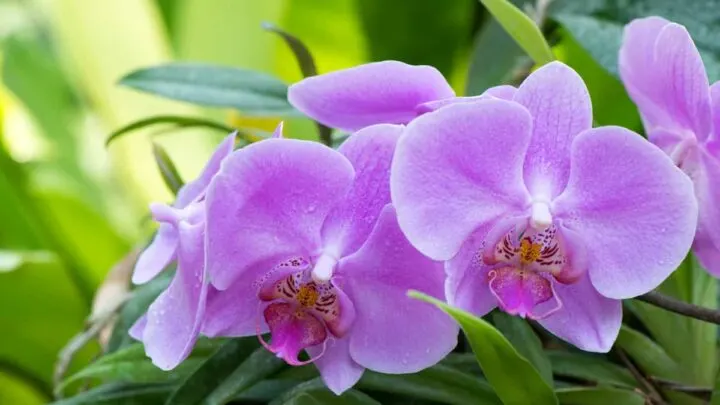
You can find Orchid trees in various colors other than pink, including yellow, white, purple, or orange.
The Orchid tree won’t suddenly be in full bloom with the type of classic orchid that you may imagine, but they resemble certain types of orchids.
You’ll want enough space if you plant an Orchid tree because they can easily grow as wide as they do tall. When many can reach 40 feet, that’s a substantial size for any yard.
Many pink flowered trees bloom specifically in April, but the Orchid tree will offer some variety because it will usually bloom in late winter through early summer.
Unfortunately, you won’t have much luck with Orchid trees in the north of the United States; you’re going to have the best luck in southern states like Texas and Florida or as far south as Hawaii.
Crimson Bottlebrush
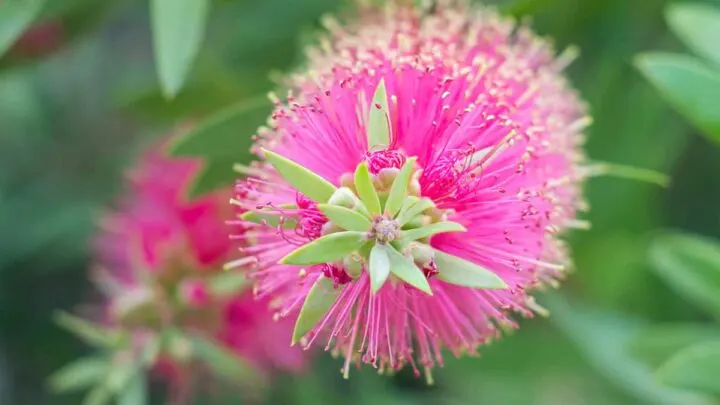
The Crimson Bottlebrush is the tree for you if you want something with flowers that are undeniably a unique shape.
As the name suggests, the Crimson Bottlebrush has flowers that are shaped like bottlebrushes. If you don’t know what that is (like I didn’t at first!), think of a chubby, short pipe cleaner. The flowers also tend to lean more on the red side of the pink family.
You can grow a Crimson Bottlebrush in nearly any climate, but the size will differ depending on the temperatures.
The Crimson Bottlebrush will grow up to 20 feet tall in warmer climates. In places with colder weather, you can expect that your Crimson Bottlebrush will be much shorter at about 5 feet tall.
Crepe Myrtle
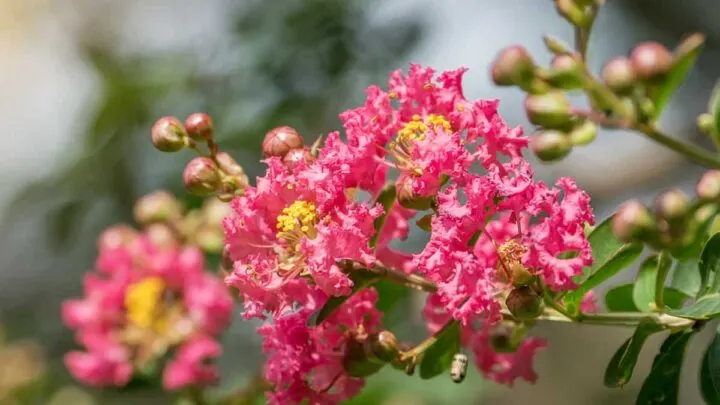
Someone who’s looking for a fluffy plume of pink flowers should look no further than the Crepe Myrtle.
You’ll need to be living in the southern United States if you want the best pink flowers on Crepe Myrtles. A frost can easily freeze and kill the buds on the tree, thus ruining the flowers that may appear.
The Crepe Myrtle also likes full sun and humid conditions, so it isn’t surprising that the trees grow best in the southern states.
There are a few different varieties of Crepe Myrtle to choose from, including:
- Japanese Crepe Myrtle
- Queen’s Crepe Myrtle
Red Horse Chestnut
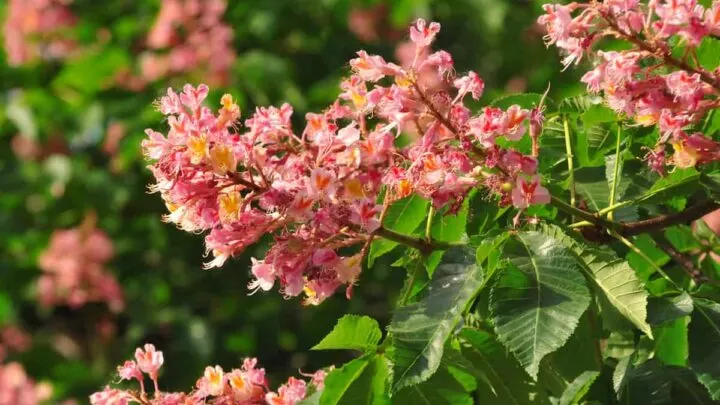
The Red Horse Chestnut tree is the perfect option for someone who wants a tree with pink flowers and can provide much-needed shade.
Red Horse Chestnut trees can top out at 40 feet tall at maturity, so this tree can easily tower over your house!
The flowers of the Red Horse Chestnut tree look similar to a flower-like a snapdragon, so they have a unique shape. The pink leans more purple than a true pink, but the vibrancy will certainly be enough to have your neighbors asking what tree that is.
Pink Trumpet
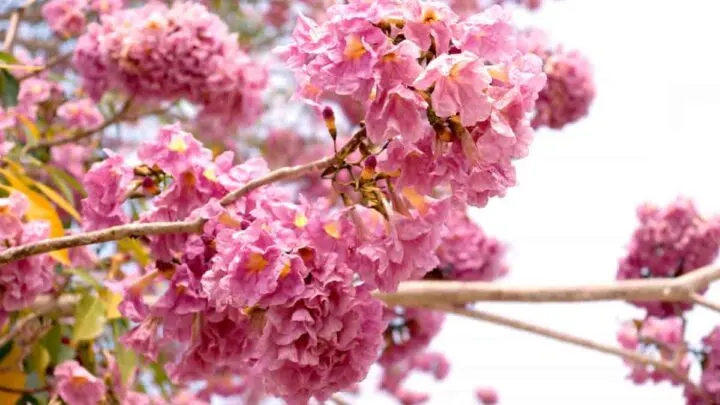
A Pink Trumpet tree is one of the smaller varieties of tree on this list, but the light pink flowers are just as powerful as larger varieties.
The canopy of the Pink Trumpet tree is also somewhat unique because it is shaped like a rounded pyramid. The bottom of the tree is wider and tapers up to the top naturally and without shaping.
I also find the Pink Trumpet tree interesting because it drops its leaves to replace them with pink flowers in the springtime, which doesn’t happen with many other trees.
You might not be shocked to hear this based on the name of the tree, but the bright flowers on the tree are shaped like tiny trumpets. That’s where the name of the tree comes from!
Flowering Almond Tree
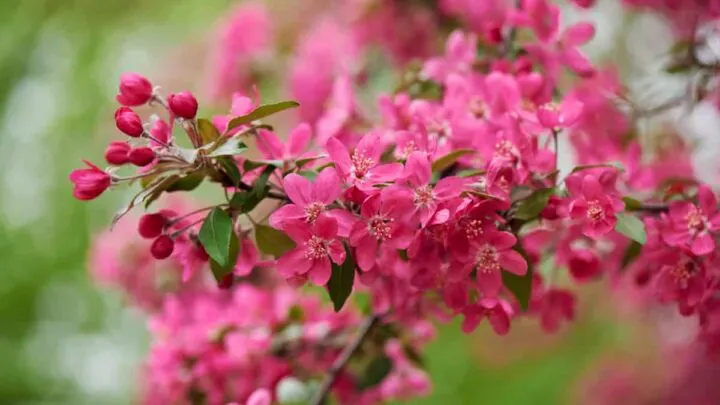
I’m tricking you here because a Flowering Almond tree is a shrub! Still, this tree (or shrub) can grow up to 15 feet tall, so it isn’t much smaller than most trees.
You won’t get any almonds from your Flowering Almond tree, but you will get beautiful pink flowers.
The branches of the Flowering Almond grow outward and are decorated with bright pink flowers to the tips.
Unlike most trees, you will want to prune your Flowering Almond tree after it blossoms to keep it looking nice and fresh for the next year. Since it begins to flower in April, you can expect to need to prune in May or June.
You’ll also need to babysit your Flowering Almond tree because it is susceptible to garden pests like caterpillars, Japanese beetles, and aphids.
Crabapple

When most people think of crabapples, they think of those pesky inedible apples that always end up in backyards throughout the summer. The Crabapple tree is a perfect choice for someone looking for dazzling pink flowers.
The blooms on the Crabapple only last for about a week or two, so you won’t have long to enjoy the flowers on your Crabapple tree.
The bloom may not be long-lasting on your tree, but you can find varieties with bright pink or magenta flowers that will brighten your yard, even just for a few days.
Weeping Cherry
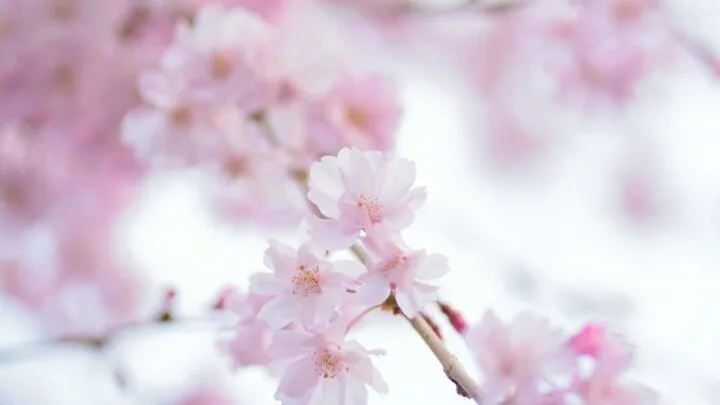
You can’t have a list of pink-flowered trees without talking about the Weeping Cherry tree, the quintessential pink flowering tree.
Everyone can picture at least one beautiful garden with a massive, old Weeping Cherry tree that easily draws all the attention of anyone looking.
The Weeping Cherry tree doesn’t love extreme temperatures – warm or cold – but can tolerate temperature variations relatively well. This means that the Weeping Cherry tree can grow in most climates, so no one has a monopoly on the tree’s beauty!
One of the biggest chores that comes with a Weeping Cherry tree is the pruning that needs to be done. The “weeping” part of the name means that the tree’s limbs hang down, but that also means that you need to prune any limbs that grow upward or outward.
I would say that the extra work is worth it for your Weeping Cherry tree’s exceptional beauty!

Hi there, my name is Allie and welcome to my blog; GareningWithAllie!
Much of what you see written here is just our personal experiences with gardening. Along with the content I write here, there is also a unique collection of gardening topics covered by some of our close friends. I hope you find everything you read here to be helpful, informative, and something that can make your gardening journey the most lovely experience ever! With that said, Happy Gardening!
